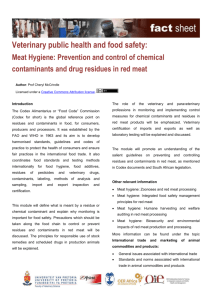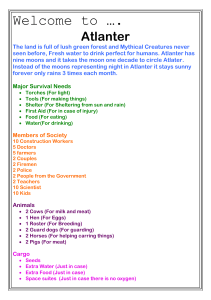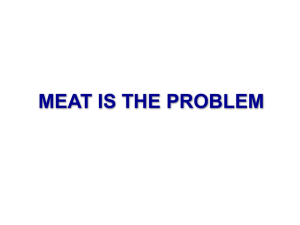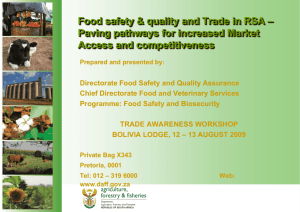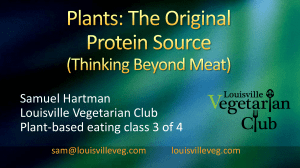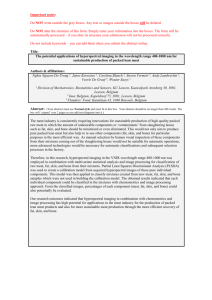meat_environment_fs
advertisement
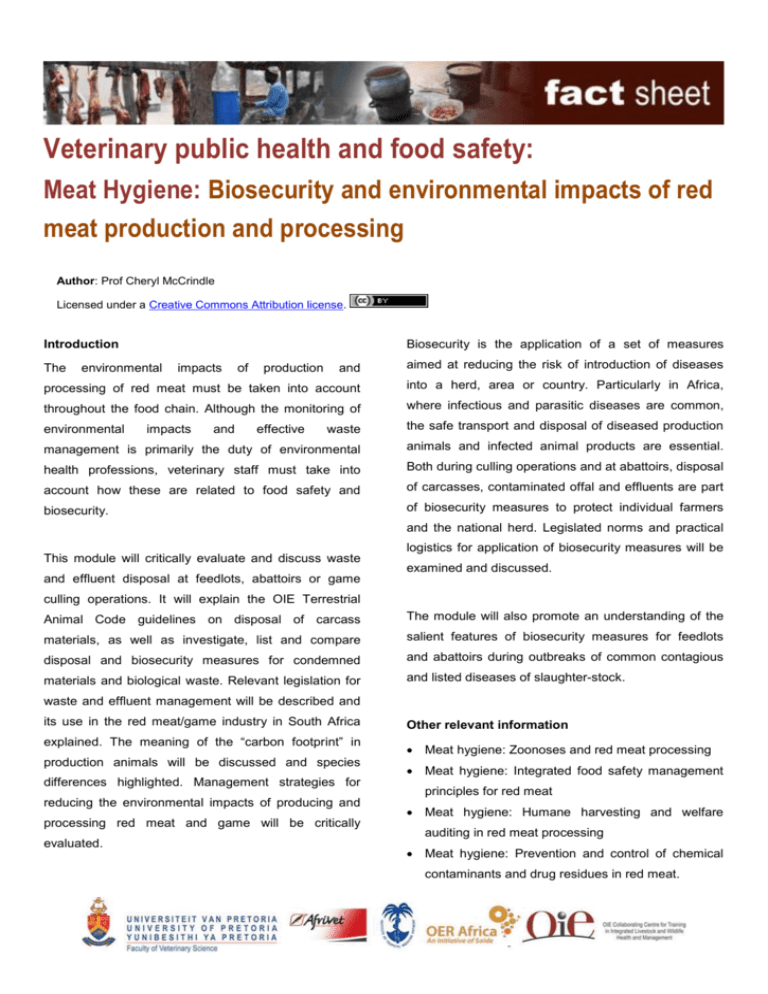
Veterinary public health and food safety: Meat Hygiene: Biosecurity and environmental impacts of red meat production and processing Author: Prof Cheryl McCrindle Licensed under a Creative Commons Attribution license. Introduction Biosecurity is the application of a set of measures and aimed at reducing the risk of introduction of diseases processing of red meat must be taken into account into a herd, area or country. Particularly in Africa, throughout the food chain. Although the monitoring of where infectious and parasitic diseases are common, environmental waste the safe transport and disposal of diseased production management is primarily the duty of environmental animals and infected animal products are essential. health professions, veterinary staff must take into Both during culling operations and at abattoirs, disposal account how these are related to food safety and of carcasses, contaminated offal and effluents are part biosecurity. of biosecurity measures to protect individual farmers The environmental impacts impacts and of production effective and the national herd. Legislated norms and practical This module will critically evaluate and discuss waste and effluent disposal at feedlots, abattoirs or game logistics for application of biosecurity measures will be examined and discussed. culling operations. It will explain the OIE Terrestrial Animal Code guidelines on disposal of carcass The module will also promote an understanding of the materials, as well as investigate, list and compare salient features of biosecurity measures for feedlots disposal and biosecurity measures for condemned and abattoirs during outbreaks of common contagious materials and biological waste. Relevant legislation for and listed diseases of slaughter-stock. waste and effluent management will be described and its use in the red meat/game industry in South Africa explained. The meaning of the “carbon footprint” in production animals will be discussed and species differences highlighted. Management strategies for reducing the environmental impacts of producing and processing red meat and game will be critically evaluated. Other relevant information Meat hygiene: Zoonoses and red meat processing Meat hygiene: Integrated food safety management principles for red meat Meat hygiene: Humane harvesting and welfare auditing in red meat processing Meat hygiene: Prevention and control of chemical contaminants and drug residues in red meat. More information can be found under the topic International trade and marketing of animal commodities and products: General issues associated with international trade Standards and norms associated with international trade in animal commodities and products Assuring the biological safety of animal production (value) chains.

